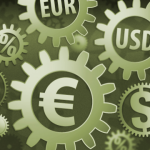Australian dollar preserved its daily gain against the US counterpart on Tuesday, trimming the largest annual drop since 2008, and following the release of some decent data regarding private sector credit in Australia.
AUD/USD reached a session high at 0.8949 at 5:00 GMT, after which consolidation followed at 0.8932, gaining 0.30% for the day. Support was likely to be received at December 30th low, 0.8834, while resistance was to be encountered at December 23rd high, 0.8958.
According to an official report released earlier today, private sector lending in Australia showed decent results in November, which implied that nations economic activity might have gained strength. Private sector lending rose 3.8% in November on annual basis, marking the fastest pace in the past one year, after another 3.5% gain in October.
Reserve Bank of Australia said that home loans increased 5.1% in November 2013 compared to November 2012, which appears to be the most considerable annual climb since May 2012. With the indicator showing good results, this also suggested a positive outlook over Australian economy. Housing sector in the country is one of the major spheres, experiencing a need for a greater investment activity, so that Australias resource-oriented economy could be re-balanced, especially after investment boom in the crucial mining sector has waned.
At the same time, Reserve Bank of Australia Governor Glenn Stevens said earlier in December that “it’s probably more preferable” to support nations economy via a weaker currency than with further reduction of borrowing costs. An exchange rate of 85 U.S. cents was “closer to the mark” than 95 cents, according to Stevens in an interview with the Australian Financial Review.
“The Aussie may go down to the 85 cent target that Glenn Stevens has talked about, but I don’t see it any lower than that,” said Thomas Averill, a managing director in Sydney at Rochford Capital, a currency and rates risk-management company, cited by Bloomberg News. “When the market starts to realize that they’re not going to see cuts coming through in Aussie rates, then the currency may well go back up again.”
The Australian dollar will probably slide to 88 U.S. cents by the end of next year, according to the median estimate of experts.
In addition, traders saw a higher than 70% probability that the RBAs benchmark interest rate will remain unchanged by June, according to swaps data compiled by Bloomberg.
The yield on Australian three-year bonds dropped three basis points, or 0.03 percentage point, to reach 2.95% on Tuesday. It has gained 28 basis points this year.
Meanwhile, the Federal Reserve Bank said on December 18th that it plans to reduce its monthly bond purchases in January to $75 billion from $85 billion, while also reinforcing its position that the benchmark interest rate will remain low for an extended period of time. Bank’s policymakers will probably trim asset purchases in increments of $10 billion over the next seven meetings before ending the program in December 2014.
Also, on Monday it became clear that pending home sales in the United States increased in November, after recording declines in the preceding several months, which implied that housing market recovery was again gaining traction, after experiencing difficulties in the middle of the year.
According to the National Association of Realtor’s (NAR), the index gauging pending home sales in the country rose 0.2% in November to reach a reading of 101.7, which was the first monthly gain since May, when pending home sales hit highs unseen in six years. Experts had expected that sales will demonstrate a faster pace of increase in November, 1.0%. The report stated that demand for homes rose during last month, after having weakened in October due to higher mortgage rates.
Pending home sales are considered as an indication of future development in the housing sector, as they reflect home sales at the moment of signing the purchase contract.
Elsewhere, the Aussie was advancing against the euro, with EUR/AUD cross down 0.59% on a daily basis to trade at 1.5414 at 13:57 GMT. AUD/NZD pair was gaining 0.19% today to trade at 1.0880 at 13:58 GMT.





